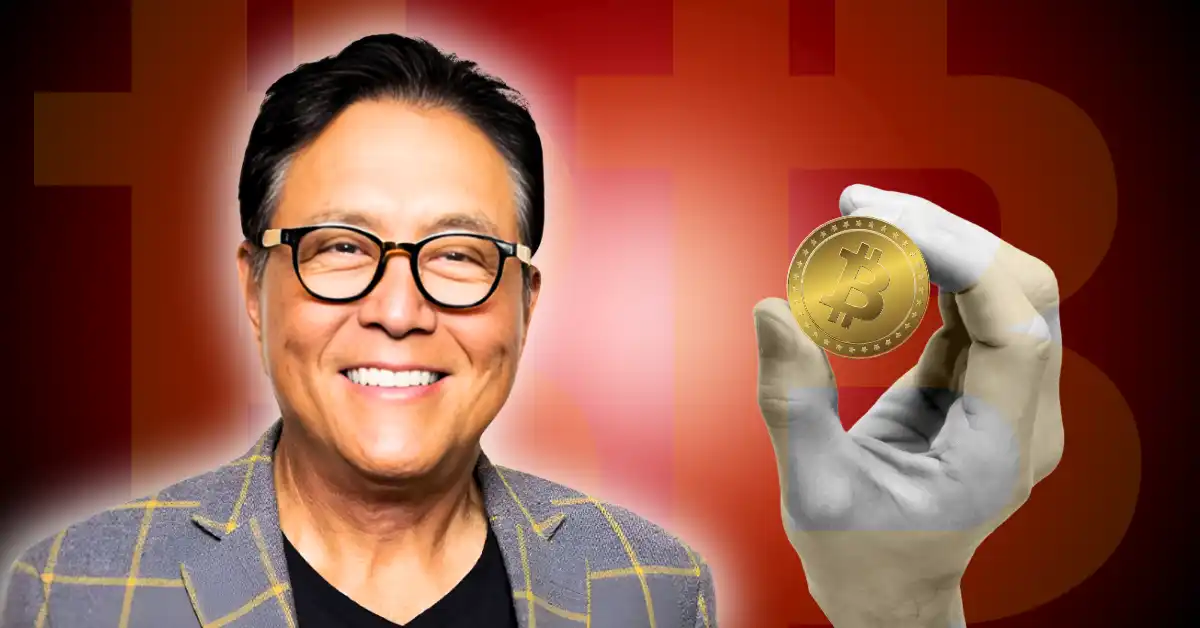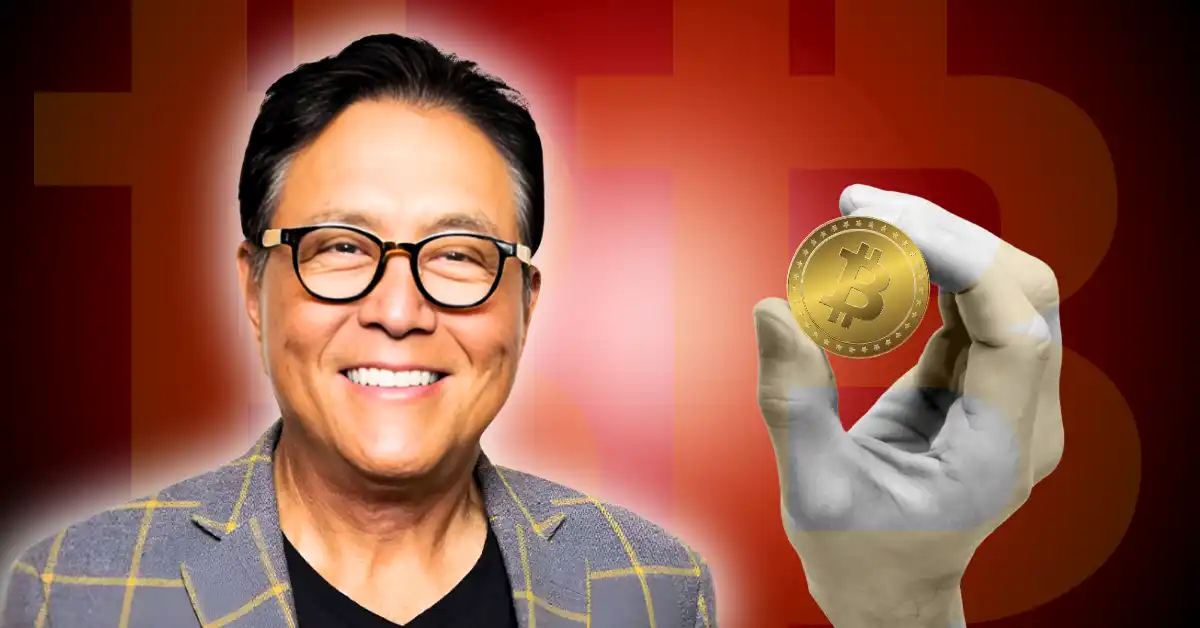The Kiyosaki Prophecy: A Critical Examination of Market Predictions and Investment Strategies
Introduction: The Man Behind the Message
Robert Kiyosaki, a name synonymous with financial education and controversy, has once again captured headlines with his latest market predictions. The author of the bestselling “Rich Dad Poor Dad” series has built a career on challenging conventional financial wisdom, advocating for financial independence through asset acquisition and entrepreneurial ventures. His recent warnings about an impending market crash, encompassing stocks, real estate, precious metals, and notably Bitcoin, have sparked debate among investors and financial analysts alike. This report aims to dissect Kiyosaki’s arguments, evaluate the validity of his predictions, and explore the potential implications for investors.
The Bubble Theory: Economic Balloons Ready to Pop
At the core of Kiyosaki’s prophecy lies the concept of economic bubbles. A bubble occurs when asset prices inflate beyond their intrinsic value, driven by speculative investment and market euphoria rather than fundamental economic principles. This phenomenon is not new; history is replete with examples of bubbles bursting, from the Dutch tulip mania of the 17th century to the dot-com bubble of the late 1990s.
Several factors contribute to the formation of bubbles. Low-interest rates, which make borrowing cheap and encourage investment, can artificially inflate asset prices. Excessive liquidity in the market, often a result of quantitative easing or other monetary policies, can lead to speculative bubbles. Additionally, the fear of missing out (FOMO) drives investors to pour money into assets they perceive as rising, further fueling the bubble.
Kiyosaki argues that the current market, particularly the cryptocurrency space, exhibits these bubble-like characteristics. The rapid ascent of Bitcoin and other digital currencies, coupled with increased institutional interest and the launch of Bitcoin ETFs, has led to a surge in market capitalization. While some view this as a sign of market maturity, Kiyosaki sees it as a precursor to a potential crash.
Bitcoin and Beyond: The Targets of Kiyosaki’s Warnings
Bitcoin, the flagship cryptocurrency, has been a primary focus of Kiyosaki’s warnings. His concerns stem from the cryptocurrency’s volatility, its susceptibility to speculative trading, and the ease with which new tokens and projects can be created. The recent price surge, driven by institutional adoption and renewed market interest, has pushed Bitcoin’s market capitalization to unprecedented levels.
However, Kiyosaki’s warnings extend beyond Bitcoin. He also targets traditional safe-haven assets like gold and silver, arguing that they too are vulnerable to a significant correction. This is a contentious claim, as gold and silver have historically served as hedges against economic uncertainty. Their prices may fluctuate, but their intrinsic value and historical significance suggest a different kind of resilience compared to more speculative assets.
The Silver Lining: Opportunity in the Midst of Chaos
Despite the grim predictions, Kiyosaki frames the potential market crash as an opportunity. He advocates for a contrarian investment strategy, encouraging investors to prepare for the crash by accumulating cash and developing a plan to buy assets at discounted prices. This approach aligns with his broader investment philosophy, which emphasizes buying undervalued assets and selling them when they are overvalued.
Contrarian investing involves going against the prevailing market sentiment, a strategy that can be risky but also highly rewarding if the investor’s analysis proves correct. Kiyosaki’s call to action is essentially a reminder to stay vigilant, manage risk, and be prepared to act decisively when market conditions change.
The Kiyosaki Philosophy: A Different Financial Mindset
Kiyosaki’s perspective is rooted in his belief that traditional financial advice often leads to debt and financial dependence. He champions financial literacy and encourages individuals to take control of their finances by investing in assets that generate passive income. His books and seminars have popularized concepts like “assets vs. liabilities” and the importance of building a portfolio of income-generating investments.
In the context of his market crash prediction, Kiyosaki is advocating for a shift in mindset. Instead of panicking during a downturn, investors should see it as an opportunity to acquire assets at a lower cost. This requires a long-term perspective and a willingness to go against the crowd, principles that are central to his investment philosophy.
The UK’s Bitcoin Bonanza: A Contrarian Indicator?
Amidst Kiyosaki’s warnings, news has emerged that the UK government plans to sell $7 billion worth of seized Bitcoin. This massive sale could potentially put downward pressure on Bitcoin’s price, at least in the short term. Whether this is a sign of things to come or simply a logistical decision by the UK government remains to be seen. However, it highlights the potential for large-scale events to impact the crypto market and underscores the volatility that Kiyosaki is warning about.
Counterarguments: Is Kiyosaki Overreacting?
While Kiyosaki’s warnings are attention-grabbing, it’s essential to consider alternative perspectives. Not everyone agrees that the market is in a bubble, and some argue that the recent price increases are justified by fundamental factors, such as increased adoption and institutional investment.
For Bitcoin, proponents argue that its limited supply, decentralized nature, and growing acceptance as a store of value make it a unique asset with long-term potential. They believe that the recent price surge is a natural consequence of increasing demand and that the cryptocurrency has the potential to reach even higher valuations in the future.
Furthermore, the argument that gold and silver are also in a bubble is contentious. These precious metals have a long history of serving as safe-haven assets during times of economic uncertainty. While their prices may fluctuate, their inherent value and historical significance suggest that they are unlikely to experience the same type of bubble-like behavior as some other assets.
Weighing the Evidence: Prudence and Preparation
Ultimately, whether Kiyosaki’s predictions will come to fruition is uncertain. Market forecasting is notoriously difficult, and even seasoned economists can be wrong. However, his warnings serve as a valuable reminder of the importance of financial prudence and risk management.
Regardless of whether a market crash is imminent, it’s always wise to diversify your investments, avoid excessive debt, and have a plan in place for dealing with potential market downturns. This includes having a cash reserve, understanding your risk tolerance, and being prepared to buy assets at discounted prices if the opportunity arises.
Conclusion: The Future is Unwritten
Kiyosaki’s message, stripped of the hyperbole, is a call for financial preparedness. Whether or not the bubbles burst as dramatically as he suggests, the potential for market volatility is ever-present. By understanding the principles of investing, managing risk, and being prepared to act decisively, investors can navigate the uncertain waters of the financial markets and potentially profit from both booms and busts. The key is not to predict the future with certainty, but to prepare for a range of possible outcomes. In the end, it’s not about whether Kiyosaki is right or wrong, but about how investors can use his insights to make informed decisions and secure their financial future.












